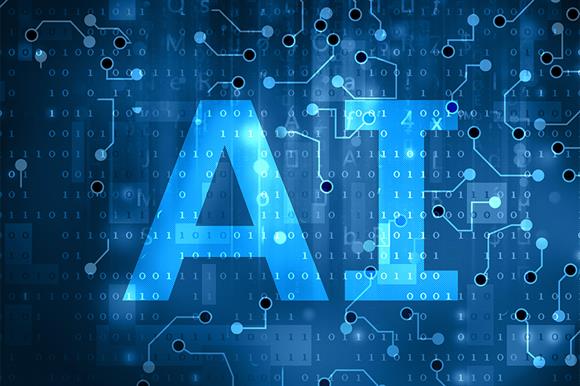AI Engineer: What They Do and How to Get Started
Have you ever wondered who actually builds the artificial intelligence tools we use every day? Not the scientist who invents the algorithm in a lab, but the person who connects that “magic” to real products like Netflix, Google, or GitHub Copilot.
The name for this role is AI Engineer, and it’s one of the most exciting and misunderstood careers in tech today. If you think you need a Ph.D. in math to work with AI, think again. In this guide, I’ll demystify what an AI Engineer really does, why this role is so crucial, and the practical path to becoming one—no fluff, just a straightforward guide.
🧠 Part 1: What is AI Engineering? (Definition)
🪄 Imagine AI like a Magic Brain
You know how Google finishes your sentence when you type? Or how Netflix suggests what you might like next? That’s AI (Artificial Intelligence). Now imagine you’re the person building those tools. That’s what an AI Engineer does:
They build the brains that help software “think” or “understand” things, and connect those brains to real products.
🎮 Analogy: Building a Talking Smart Toy
Imagine you’re part of a team making a smart toy — like a plushie that talks, answers questions, and even tells jokes.
In this project:
| Role | What they do |
|---|---|
| Toy Designer | Designs the outside — colors, buttons, arms. (like a UI designer) |
| Software Engineer | Writes code so the toy’s buttons work. (makes it do stuff) |
| ML Researcher | Invents the brain — how it learns to speak, recognize words, or tell jokes. (the model itself) |
| AI Engineer (YOU) | Takes that brain and makes it work in the toy. You connect everything: voice input → AI → response. |
🧩 So, what is an AI Engineer?
An AI Engineer is someone who integrates smart models into real software, turning research into working products.
You’re not just coding. You’re making AI usable, efficient, safe, and accessible in real-world apps.
🔥 Part 2: Why AI Engineering Matters
🧃Analogy: Adding “AI” is like adding juice to plain water.
Plain software can follow rules, like a calculator. AI-powered software can adapt, predict, summarize, generate, and learn.
| Without AI | With AI |
|---|---|
| Google search gives exact matches | AI search can understand your intention |
| Video app shows what’s popular | AI recommends what you personally like |
| Text editor corrects spelling | AI suggests whole sentences and summaries |
AI Engineering is about giving software a bit of “smartness juice.”
🧱 Part 3: What Do AI Engineers Actually Build?
| Task | Example |
|---|---|
| Text summarizer | Your project! Condenses long text |
| Image classifier | Recognizes cats vs. dogs |
| Recommender system | Suggests movies or products |
| Chatbot | Answers questions like a human |
| Speech recognizer | Translates voice to text (like Siri) |
| AI Copilot (like GitHub Copilot) | Helps you write code |
🧩 They don’t invent the AI algorithms (usually). They use and combine them with products and data.
🚀 Part 4: How to Start (Beginner Level)
🧰 Skills & Tools to Learn First:
| Category | What You Should Learn First |
|---|---|
| Programming | Python + basic JS |
| APIs | REST, how to use OpenAI API |
| AI Models | What is GPT, what is a model |
| Backend | FastAPI |
| Frontend | ReactJS |
🎓 Think of it like Minecraft:
- Each block you learn (API, Python, HTTP, prompt) helps you build something cooler.
🧗 Part 5: What to Learn Next (Level Up)
Once you’re comfortable building small apps using AI APIs, level up by learning under the hood:
🧪 Intermediate: “How AI Works”
| Topic | Example or Tool |
|---|---|
| Machine Learning | Scikit-learn, Pandas |
| Neural Networks | TensorFlow or PyTorch |
| Data pipelines | Cleaning & transforming data |
| Prompt engineering | Getting better responses from LLMs |
| Evaluation/metrics | How to know if it’s working right |
🧠 Advanced: “Become the Architect”
- Fine-tune a model for your own data
- Train your own small models
- Optimize performance (cost, latency)
- Learn model deployment (Docker, Kubernetes)
- Understand model fairness, bias, safety
🌟 Recap Table: Beginner to Advanced Journey
| Level | Focus | Tools / Goals |
|---|---|---|
| 🟢 Starter | Use APIs (GPT, image, speech, etc) | React, FastAPI, OpenAI, Axios |
| 🟡 Builder | Connect AI to data & products | Python, JSON, REST, Prompt Engineering |
| 🟠 Developer | Learn how ML & models work | Pandas, Scikit-learn, PyTorch basics |
| 🔴 Architect | Build & deploy your own AI pipelines | Docker, GPUs, model tuning |
